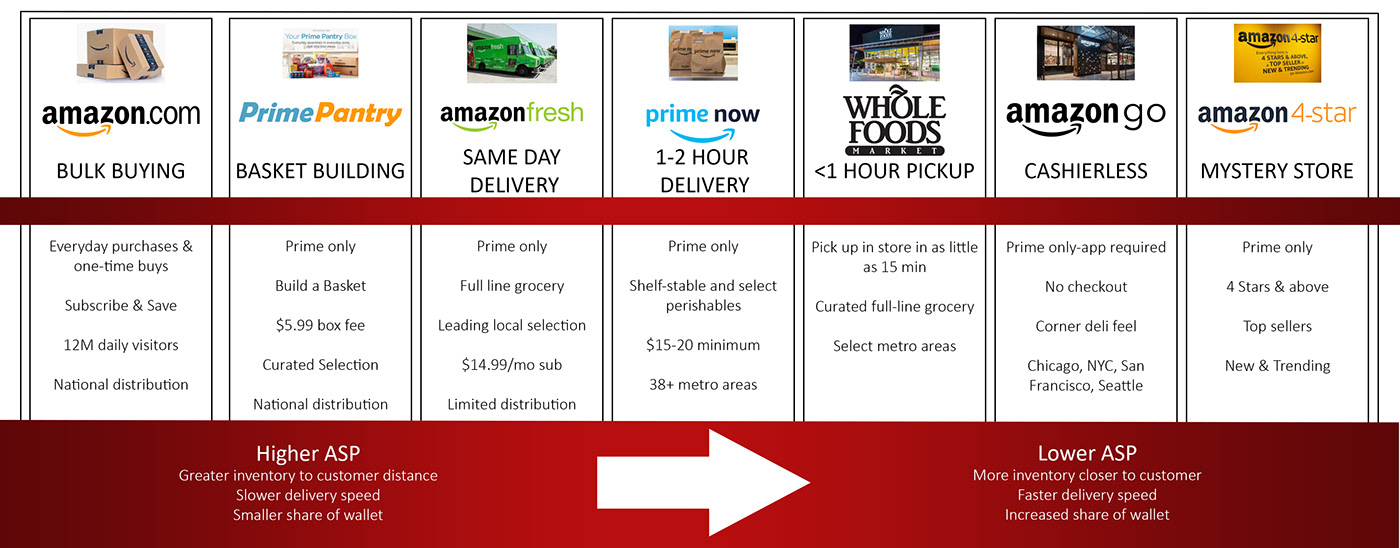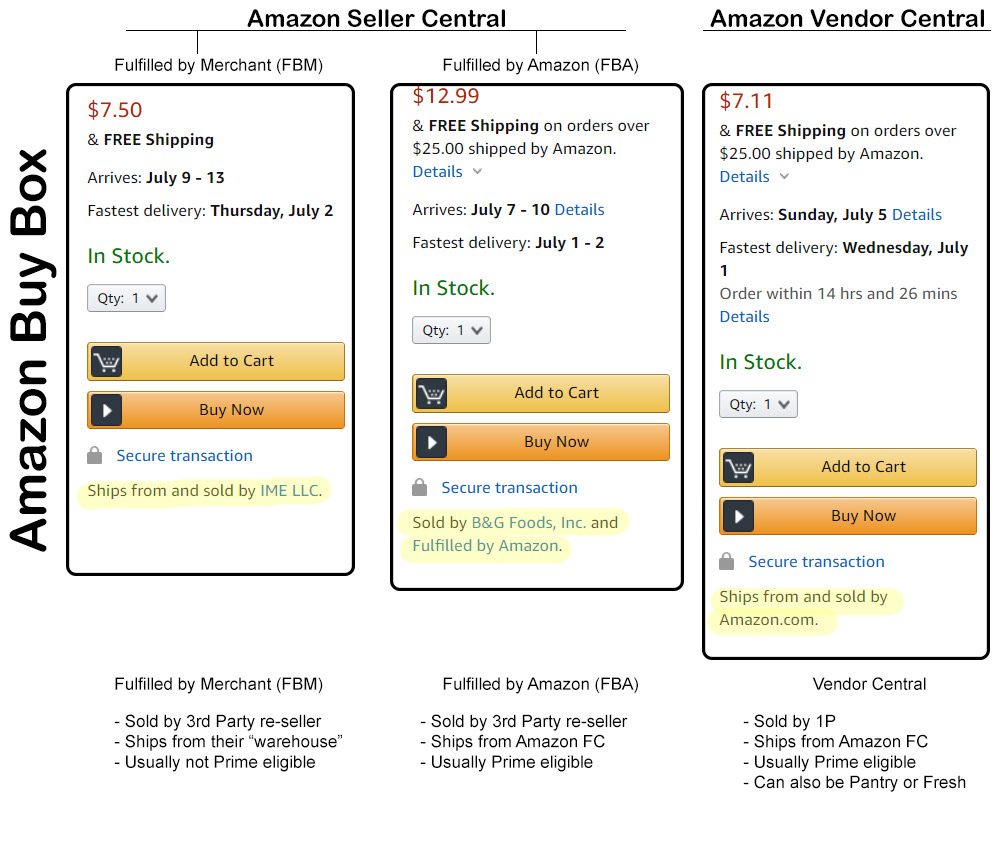eCommerce Presentation Images
Amazon Platforms Explained

I designed this chart in Photoshop for internal presentations to educate different teams on all the different Amazon platforms. There are 7 different Amazon CPG programs as of January 2020, with a brick and mortar grocery store planned to open in late 2020. Moving from left to right, customers see a higher average selling price and access to greater inventory at the cost of slower delivery speed, and for us as the manufacturer, there are more brands competing for a customer’s spend.. Whole Foods, Amazon Go and Amazon 4 Star stores all have the lowest average selling price with limited inventory closest to customers available from anywhere between 15 minutes and instantly if the customer picks up in store. Although it is a limited selection in these stores, CPG companies compete against fewer brands for an increased share of wallet.
Amazon Buy Box Explained

Buyer beware! When you place an order from Amazon as a consumer, very little attention is often paid to who is selling the product. I created this chart in Photoshop to educate internal teams who wanted to find out if an item in the Amazon catalog was being sold by us or a 3P seller.
Seller Central/Vendor Central Comparison

Throughout Amazon.com, CPG companies are able to sell items to a loyal customer base who often compare prices and research Amazon before purchasing anywhere else. Most large CPG companies sell on Amazon.com via Vendor Central. Distributors and 3P sellers claim Seller Central as their domain. There are advantages to selling via both models, as this chart explains.





